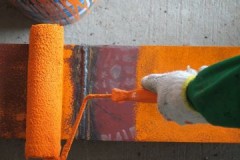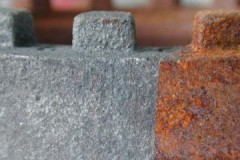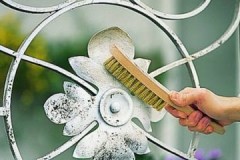The most effective ways to clean tools from rust
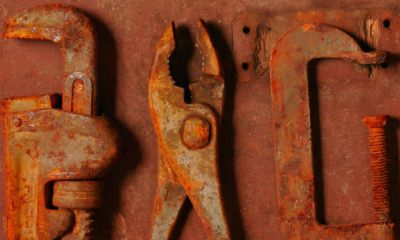 Sometimes one glance at a rusted tool is enough to make a decision to get rid of it. However, you should not rush, as there are many ways to deal with corrosion at home.
Sometimes one glance at a rusted tool is enough to make a decision to get rid of it. However, you should not rush, as there are many ways to deal with corrosion at home.
Come to the aid of folk or store means, or devices for mechanical cleaning.
Read about how to properly apply them in practice, successfully clean the tool from rust at home and restore its original appearance, read the article.
Content
Folk remedies
You can quickly and safely deal with rust with the help of available tools. The most unexpected and inexpensive formulations come to the rescue, including acetic acid, hydrogen peroxide and even carbonated drinks such as Coca-Cola, but for these funds to work, they must be used according to the instructions.
How to remove with acetic acid?
It is recommended to use 70% essence for cleaning.
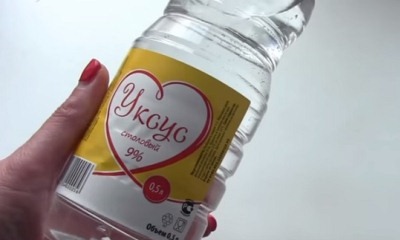 Mode of application:
Mode of application:
- Place the tool to be cleaned in a suitable container.
- Fill it completely with acetic acid.
- Close the container with a lid and leave for several days. The more rust, the longer it will take.
- After cleaning is complete, rinse the instrument in a baking soda solution. It neutralizes acid.
After such processing, you can continue to use the devices. The effectiveness of cleansing with essence is very high. It allows you to cope even with a thick layer of rust. If it is small, then you can use table vinegar or lemon juice.
It is not recommended to use vinegar on aluminum tools, as it will dissolve the epoxy layer and damage the metal structure.
Citric acid and hydrogen peroxide
You can get rid of rust with citric acid and pharmacy hydrogen peroxide. To prepare the solution you will need:
- citric acid - 20 g;
- peroxide - 15 ml;
- water - 100 ml.
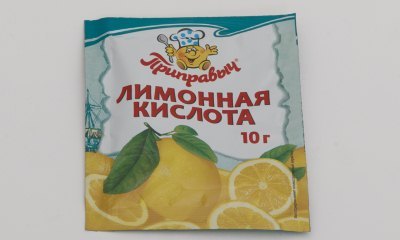 Instructions for use:
Instructions for use:
- All components are mixed with each other.
- Fold the tool into a suitable container, fill it with a solution.
- Leave them for a day under a closed lid.
- After the indicated time, the solution is decanted. The tool is washed with clean water, dried and used as directed.
The solution will darken during cleaning. This is the norm and indicates the effectiveness of the composition. With its help, you can cope with a small layer of rust.
If the instrument is badly damaged, the concentration of the solution must be increased. In advanced cases, they refuse to add water altogether, dissolving citric acid in peroxide.
The video will tell you how to remove rust with citric acid and peroxide:
How to remove Coca-Cola?
Coca-Cola is a popular carbonated beverage that can be used to remove rust. The effect is achieved due to the content of phosphoric acid in it, which corrodes oxides.
Mode of application:
- pour Coca-Cola into a suitable container;
- place rusted objects in it;
- cover the container with a lid;
- leave for a day.
The next day, the part is removed, rinsed with clean water and dried.
Soda
You can treat rust with baking soda. The alkaline solution will help remove a small layer of corrosion without harming the metal. The effectiveness of the method is explained by the active action of sodium.
Mode of application:
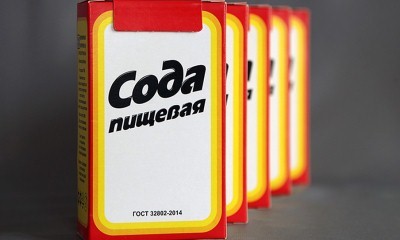 Prepare the required amount of soda gruel by mixing the powder with water. It should be moderately thick, resembling a paste in consistency.
Prepare the required amount of soda gruel by mixing the powder with water. It should be moderately thick, resembling a paste in consistency.- Apply the paste to the instrument using a sponge.
- Leave the mixture to work for an hour.
- Rinse the product and wipe it with a dry soft cloth.
- The procedure can be repeated if necessary.
Baking soda is not a highly effective way to fight rust, but a small layer of it can be removed.
Zinc chloride
You can use zinc chloride to remove rust. Apply it as follows:
- 20 g of zinc chloride is dissolved in 200 ml of water, the agent is prepared in the amount in which it is necessary;
- pour the solution into a suitable container, lower the tool into it;
- leave to act for an hour;
- rinse the instrument with clean water and wipe it with a dry cloth.
The method is quite effective, zinc chloride allows you to cope even with large areas of corrosion.
Specialized formulations
If the tools at hand do not cope with rust, you can use store formulations. The following removers remove corrosion well:
-
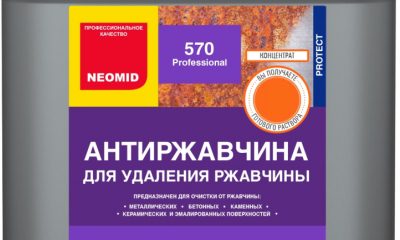 Neomid 570... The concentrated formulation contains a complexing agent, a solvent and a corrosion inhibitor. The composition is applied to the problem area with a synthetic sponge and left for half an hour.
Neomid 570... The concentrated formulation contains a complexing agent, a solvent and a corrosion inhibitor. The composition is applied to the problem area with a synthetic sponge and left for half an hour.After completion of the reaction, the residues of the agent are removed with water. The cost of 1 liter of solution is 580 rubles.
- Rust Remover Prosept 023-05... The composition is applied to the surface using a spray bottle, which is equipped with a bottle. Leave the product for 20 minutes to act, then rinse it off with water or remove it with a damp sponge. The cost of a 0.5 liter solution is 250 rubles.
- Zinc stripper G-Power... The tool is applied to the cleaned surface, wait for it to dry completely and thoroughly clean the tool with a soft brush. The cost of a solution with a volume of 0.75 liters is 200 rubles.
You can buy the formulations in hardware stores and in stores for motorists, as well as on the Internet.
Mechanical cleaning to restore the original appearance
You can get rid of rust on tools mechanically. To do this, use:
- Hand brushes with metal bristles. They differ in the stiffness of the bristles and in the way they are attached to the handle.
- Mechanical brushes with pneumatic drive.At first glance, this method may seem simple to use, but working with automatic brushes is quite difficult, since you have to process small parts. During the procedure, a lot of fine metal dust is generated in the room, therefore, the respiratory organs must be protected with a respirator.
- Aluminum foil dipped in vinegar or other acid.
- Sandblasting machines. With their help, it will be possible to clean the instrument in a few seconds. Moreover, the thickness of the corrosion does not matter.
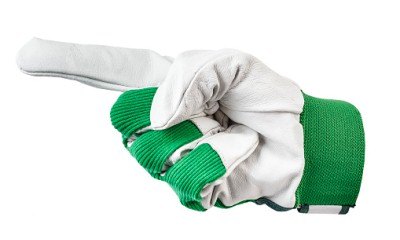 Regardless of the selected device, the procedure does not change. General instructions for the use of tools:
Regardless of the selected device, the procedure does not change. General instructions for the use of tools:
- before starting cleaning, the tool must be securely fixed - the vise is the optimal setting for this purpose;
- rub the surface evenly, controlling the pressure;
- movements should be circular;
- the harder the brush, the less time the procedure takes.
Helpful information
To make the process of removing rust from tools as efficient and safe as possible, you must adhere to the following recommendations:
- Care must be taken when handling acids and caustic compounds. Hands must be protected with gloves and make sure that the product does not get into the eyes or on exposed skin.
- Use plastic basins or buckets to soak the tools. Metal products are not suitable for this purpose.
- The rust remover does not need to be poured out. If there are other contaminated tools in the house, it is permissible to reuse it by filtering through cheesecloth. The effectiveness of acidic formulations does not decrease from this.
- Peeling rust must be mechanically removed before using any solvent.
- Chemical reagents should be used in a well ventilated area away from heat sources.
Conclusion
Removing rust from tools is not difficult. For the procedure, you can use improvised means or store formulations. In extreme cases, they resort to a mechanical cleaning method.

